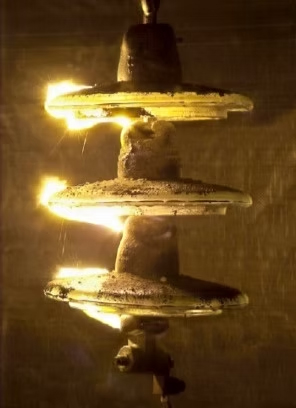
HOW TO SELECT INSULATORS FOR POLLUTED ENVIRONMENTS
2025-11-17 15:08In recent years, with the substantial increase in electricity demand, utilities must enhance the efficiency of their transmission lines to avoid economic losses caused by power line failures. Investigations have revealed that insulator flashover is one of the causes of power supply interruptions.
What's the flashover in the insulator?
The insulator begins to fail when the pollutants that exist in the air settle in the surface of the insulator and combine with the humidity of the fog, rain, or dew. The mixture of pollutants, plus the humidity form a layer that can become conductor and allow passing currents that will facilitate the conditions of short circuit. This is due to a decrease of the resistance of the insulator surface. Unless there is a natural cleaning or an adequate maintenance, the electrical activity will be affected by a possible flashover in the insulator.

Three main types of pollution:
Industrial pollution
Marine pollution
Desert pollution
According to IEC 60185, procelain insulators and glass insulators are selected for three phase a.c. systems.
| Pollution level | Examples of typical environments |
| I-Light |
All these areas shall be situated at least 10 km to 20 km from the sea and shall not be exposed to winds directly from the sea |
| II-Medium |
|
| III-Heavy |
|
| IV - Very heavy |
|
For a.c. porcelain and glass insulators, a utility would typically specify maximum connection length taking into account live line work, minimum dry arcing distance, and minimum creepage distance. Then, it would be stated that insulator profile must comply with IEC/TR 60815, the focus being on simplicity and ease of use.
